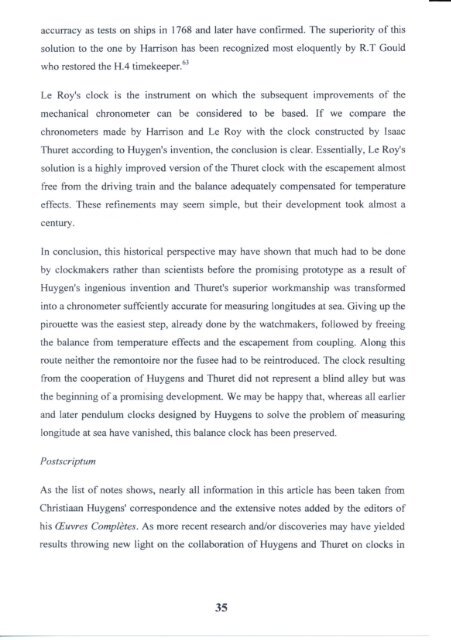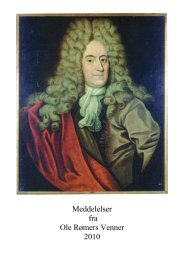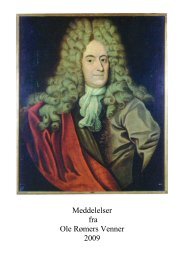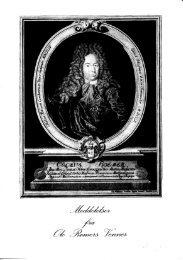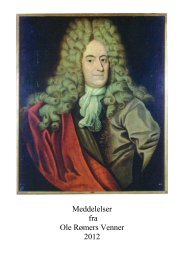Meddelelser 2008 - Ole Rømers Venner
Meddelelser 2008 - Ole Rømers Venner
Meddelelser 2008 - Ole Rømers Venner
You also want an ePaper? Increase the reach of your titles
YUMPU automatically turns print PDFs into web optimized ePapers that Google loves.
accurracy as tests on ships in 1768 and later have confirmed. The superiority of this<br />
solution to the one by Harrison has been recognized most eloquently by R.T Could<br />
who restored the H.4 timek*eper.u'<br />
Le Roy's clock is the instrument on which the subsequent improvements of the<br />
mechanical chronometer can be considered to be based. If we compare the<br />
chronometers made by Harrison and Le Roy with the clock constructed by lsaac<br />
Thuret according to Huygen's invention, the conclusion is clear. Essentially, Le Roy's<br />
solution is a highly improved version of the Thuret clock with the escapement almost<br />
free from the driving train and the balance adequately compensated for temperature<br />
effects. These refinements may seem simple, but their development took almost a<br />
century.<br />
In conclusion, this historical perspective may have shown that much had to be done<br />
by clockmakers rather than scientists before the promising protofype as a result of<br />
Huygen's ingenious invention and Thuret's superior workmanship was transformed<br />
into a chronometer suffciently accurate for measuring longitudes at sea. Giving up the<br />
pirouette was the easiest step, already done by the watchmakers, followed by freeing<br />
the balance from temperature effects and the escapement from coupling. Along this<br />
route neither the remontoire nor the fusee had to be reintroduced. The clock resulting<br />
from the cooperation of Huygens and Thuret did not represent a blind alley but was<br />
the beginning of a promising development. We may be happy that, whereas all earlier<br />
and later pendulum clocks designed by Huygens to solve the problem of measuring<br />
longitude at sea have vanished, this balance clock has been preserved.<br />
Postscriptum<br />
As the list of notes shows, nearly all information in this article has been taken from<br />
Christiaan Huygens' correspondence and the extensive notes added by the editors of<br />
his Guvres Complåtes. As more recent research and/or discoveries may have yielded<br />
results throwing new light on the collaboration of Huygens and Thuret on clocks in<br />
35


